What do you think about when you see geraniums? For me, it must be the rich, red blooms overflowing the wide flower pots hanging from the windows of my grandparents home. They were some of my grandmother’s favorite flowers.
To this day, I have two large pots of geraniums propagated from those same flowers. Although I now live 2000km to the North. Yes, we brought the flowers with us. My mother has a few of them herself and I am sure she thinks of her mother every time she cares for them.
Some sources say that geraniums on the balcony will help repel wasps and mosquitoes because of their strong scent. I am personally quite sceptical of such claims, the internet is a wide and wild place full of outlandish claims of all types.
Others write about the healing properties of the geranium root, or essential oils. I stay reserved about those too.
What I do know is that I enjoy the scent of geranium essential oil. It’s rosy, but with a nice woody base note. If you don’t know it, I recommend you give it a whiff next time you are in a shop where they have it.
For this reason, geranium oil is one of my new favourite scent (and the occasional candle) for making soap - see the complete recipe below.
History
Originally a native plant in South Africa, the first geranium plant to have reached Europe was brought to the botanical garden of Leiden in The Netherlands before 1600 and was of the variety called Pelargonium triste.
At the time, the exchange of knowledge and plants between Dutch and English botanists and gardens was extremely intense, so that some species were soon grown in Oxford and Chelsea.
From that point it started spreading all over the continent, to places like Madrid or Vienna and the Schönbrunn gardens, on its way to becoming the favorite plant we know today.
Around 1850, the pelargoniums also found their way to the United States of America and Australia and became increasingly popular in California, where the climate is much more favorable.
The flowers are five-petaled and white to purple. The leaves are divided into narrow, pointed segments. The fruit capsule is made of five parts which eventually separate, each containing one seed. When the fruit is ripe, the stigma springs open and casts the seeds some distance, dispersing the seeds.
The genus name is derived from the Greek γέρανος (géranos), 'crane'. The English name 'cranesbill' derives from the resemblance of the fruit capsule of some of the species to a crane's head and bill.

Care
For me the most important quality of flowers and house plants in general is the lack of fussiness. Geraniums certainly qualify. They are easy to care for, even in winter in our zone 4 up here in Estonia. I just bring them all inside, trim them quite heavily to make them fit on the shelves and place them in the brightest window of the house. They stay green all winter and when spring comes, I take them back outside to the deck for the summer season.
If they grew too much and became leggy, they get another haircut to make room for more growth and flowers. The flowers start appearing in summer, usually after Midsummer, in July. They keep on flowering until the cold in around September or October. They don’t even mind if you forgot them outside during the first frosty night of the autumn.
They need what I consider more than the usual amount of water (about twice a week in winter, every day in summer) - to compare to most of my house plants which are potty trained to get their water once a week and they are all fine like that.
They are very easy to propagate, I just simply take some cuttings with a few leaves on them (no flowers, the energy of the plant should go into making roots, not flowers) and place them into pots with fresh flower soil. Keep them moist enough, not waterlogged and you will have new geranium plants!
If you have reason to bake a fancy cake during geranium season, you can even use fresh flower petals as decoration on the cake. They are edible and will look great!
The Soap
These ingredients will make about 1300g of soap, just enough to fill my 42ounce soap mold box.
Ingredients:
Liquids:
127g lye (sodium hydroxide)
285g water
Oils:
250g pomace olive oil
160g castor oil
300g coconut oil
100g shea butter
100g sunflower oil
Essential oils, color:
34g geranium oil
6g sandalwood oil
a generous teaspoon of pink mica powder
a handful of dried geranium flower petals (from my own flowers)
The lye combined with the water and fat will just turn into soap, and no harmful chemicals are left after the process is complete.
Very Important:
When working with lye
Wear protective clothing (long sleeves and trousers)
Put on gloves
Wear protective goggles
Method:
Carefully measure out your ingredients.
Melt and mix the oils in a pot on low heat, until they are both liquid (see mine below). Add the mica powder in this step and stir well until dissolved and evenly distributed.
If possible, go outside for this step. Carefully and slowly pour your water over the lye and mix gently. It might create some unpleasant vapours, so it is best done outside. This mix will get very hot, so be very careful. Let it cool for a few minutes.
Measure the temperature of your lye water and your oil mix separately, with a thermometer.
Once they are around 40C, you can gently pour the oil mixture into the lye water and mix gently with a spatula.
Next you will want to use a stick blender, on pulse, a few seconds at a time, until your mixture starts to thicken to the texture of a (very) light pudding.
It will keep hardening, so you need to work fast from here. Add the mix of essential oil and stir quickly, maybe pulsing once with the stick blender.
Pour it into a large silicone mold and spray a few times with isopropyl alcohol (to prevent soda ash from forming), then cover lightly with a baking paper.
After about 24h-48h you can remove the soap from the mold and cut it in slices.
Now you need to wait. Place the soaps in a dry place to cure, for about 4-6 weeks.
My new soap bars are sitting on top of the bookshelf in the office and I can smell them every time I enter the room. Very nice ambiant smell!
For making soap, you can use this lye calculator and this table which gives a nice collection of matching scents for various essential oils.
I also strongly recommend you watch this video if you want to embark on a soap making journey:
Thank you for reading! Until next time!


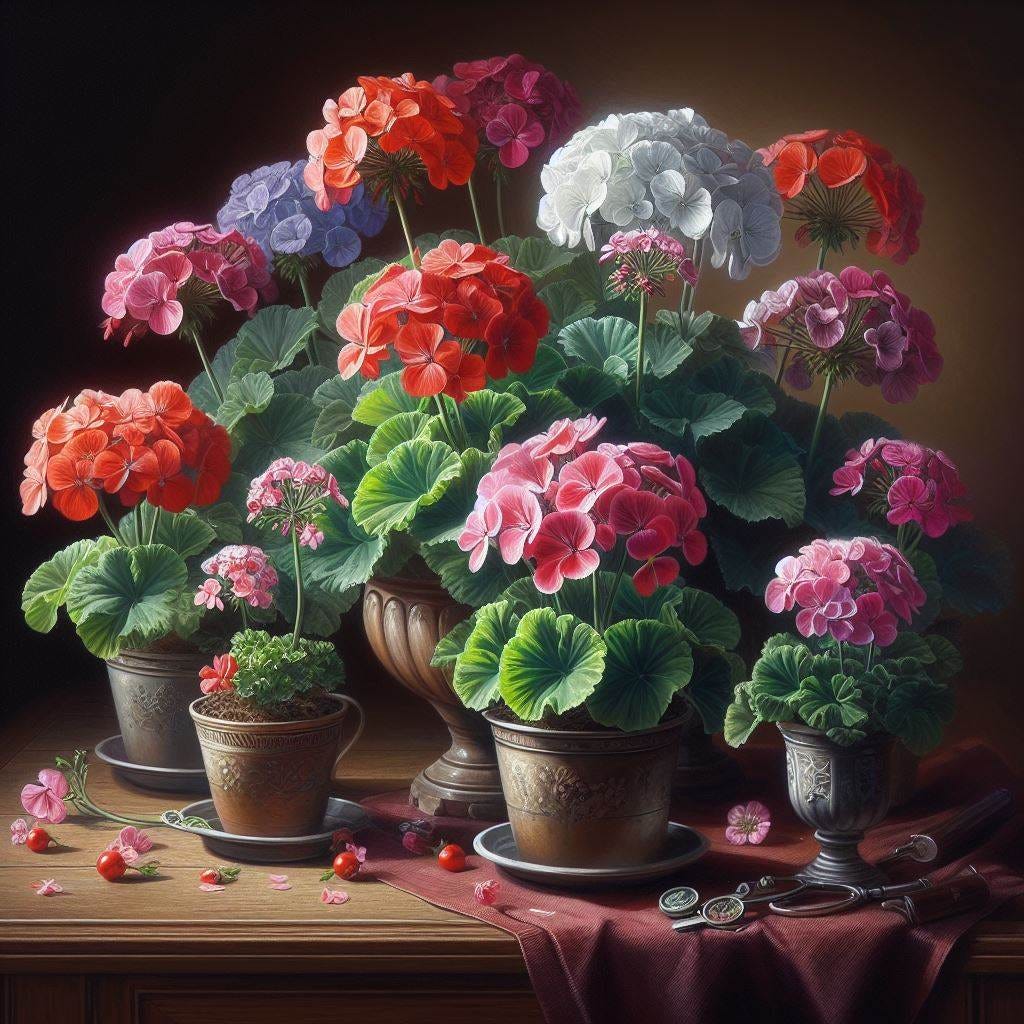
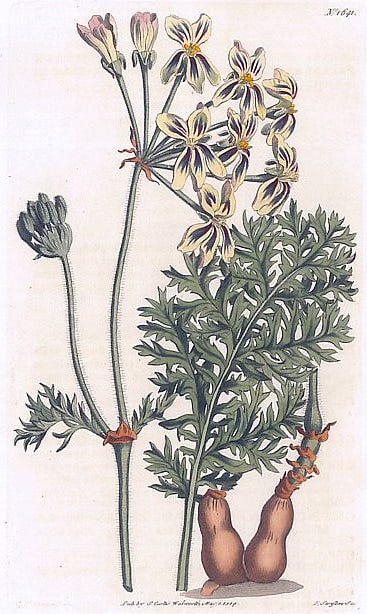
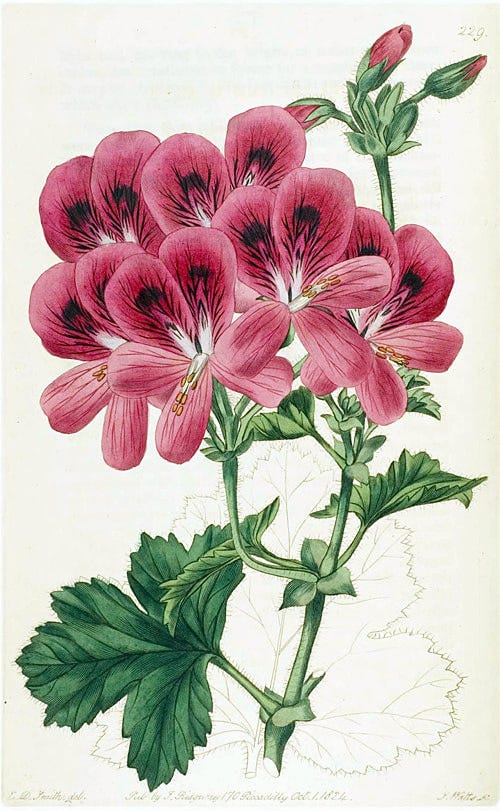
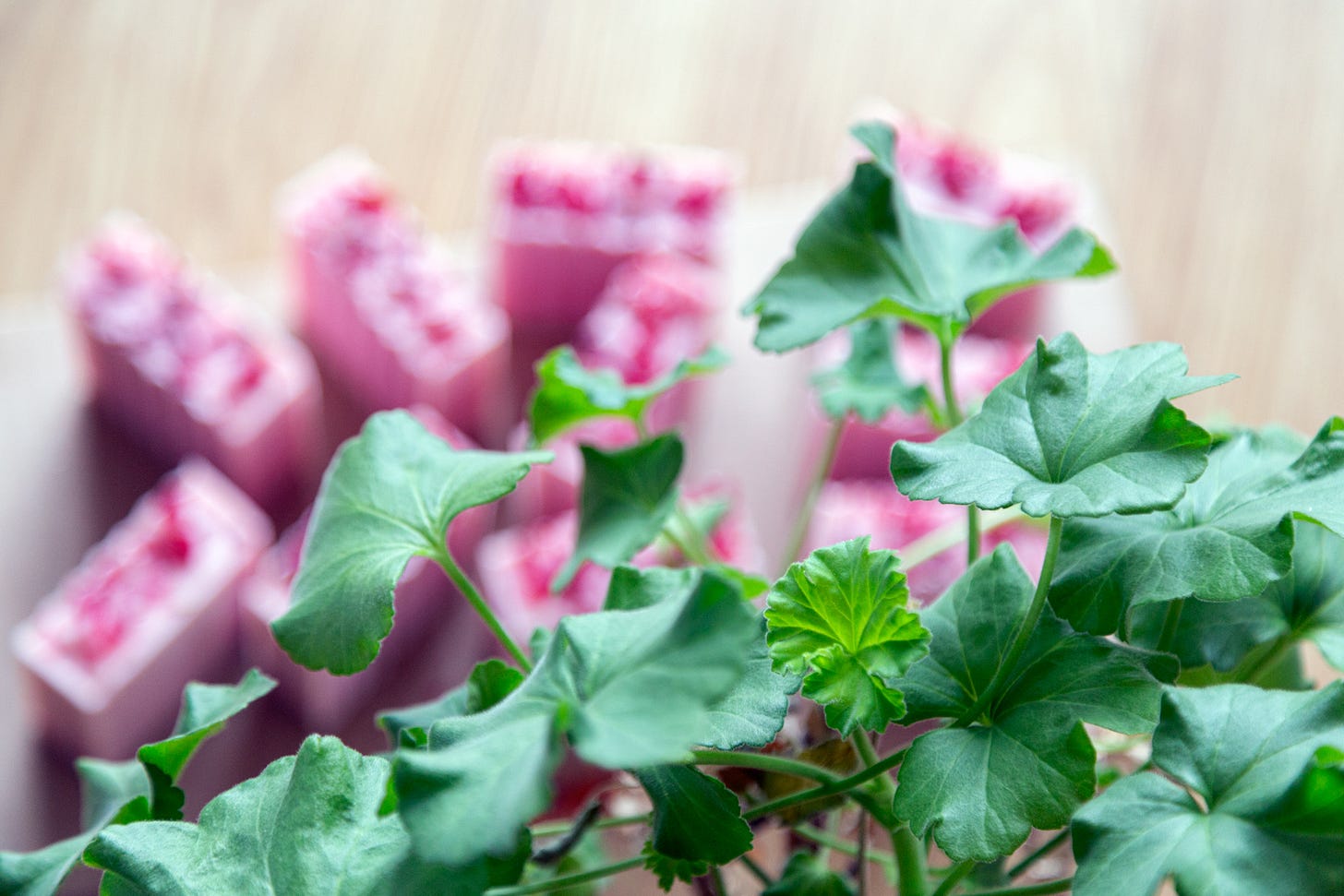
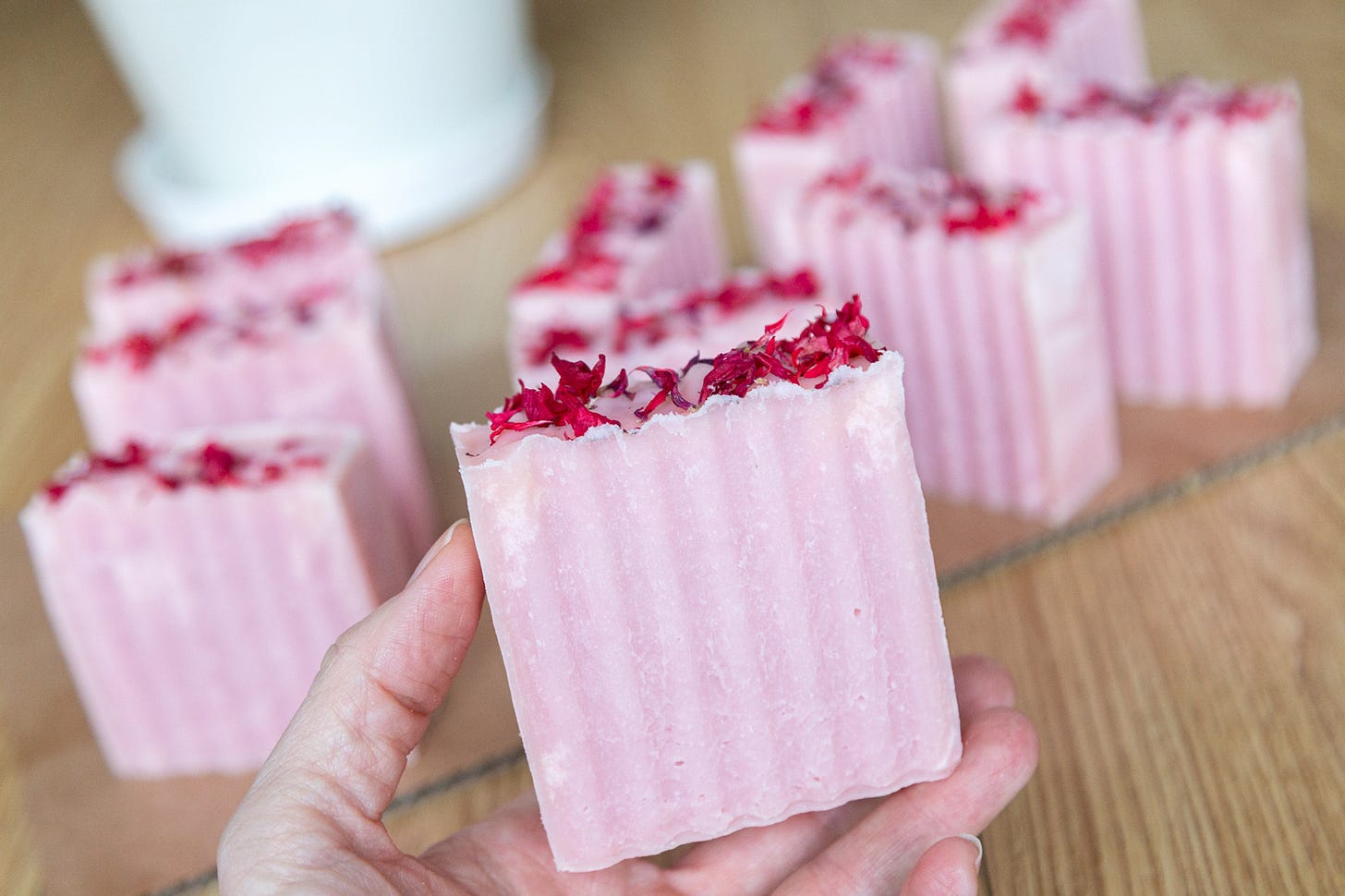


Sandra, thank you so much for recommending Little Farm Writer! I’m just now catching up on Substack emails, so sorry for this belated thanks. I so appreciate your support!
Lovely post! Until I read it I had forgotten that my mother is a big geranium fan and has always kept big pots of them wherever she’s living 😊 It’s also reminded me I want to get a few geraniums for our place this summer—something I’m sure the rabbits won’t eat!
By the way, I really appreciated your recommendation of “Echoes from an Old Hollow Tree.” A really interesting writer!